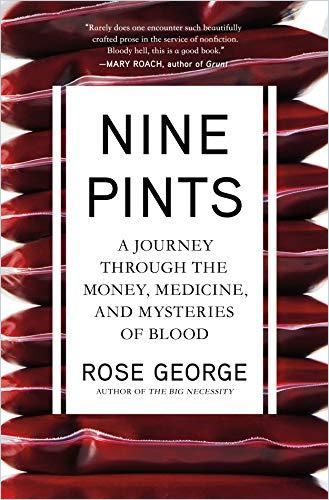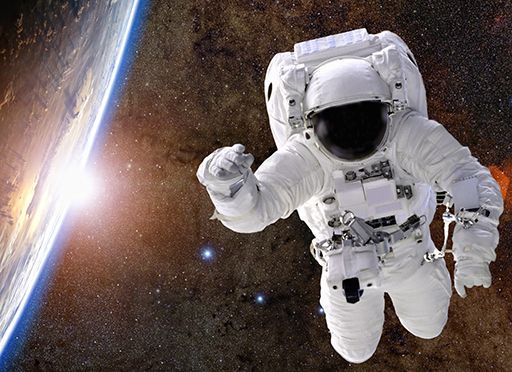Esteemed journalist and author Rose George illuminates how blood functions in the body and in the worldwide marketplace.

Blood and Money
To reveal humanity’s relationship to blood, journalist Rose George takes you to World War II London and to contemporary rural Nepal, where traditions dictate that society must shun menstruating women. She unveils revolutionary blood products that might extend life. George discusses the fascinating history, myths and, most tellingly for her, marketplaces of blood and blood products.
The New York Times marvels that Nine Pints “demonstrate[s]…a no-nonsense briskness on the page; a forensic zeal; a potent moral sensibility.” The Wall Street Journal found this “a compelling chronicle, displaying an engaging prose style as well as welcome moments of righteous indignation.“ It’s no accident that reviewers cite George’s strong sense of morality. She wants you to feel the outrage at injustice and greed that she feels.
Blood
George starts with the basics: Blood donors usually provide a pint, and the body easily replaces it. Somebody, somewhere, she found, receives blood every three seconds.
Already blood is a surveillance camera, the widest window with the best view into my past, present and predictable future.Rose George
George explains that bone marrow generates red blood cells – two million cells per second – and stem cells. The heart pumps 30 trillion red blood cells through the body daily, approximately, she notes, 12,000 miles, clearing CO2 and other waste, and fighting infections, clotting when it must.
Blood Donors
George identifies Percy Lane Oliver, a Red Cross volunteer who established the London Blood Transfusion Service, a directory of volunteer donors cataloged by blood group.
Janet Vaughan was a renowned expert in blood diseases, but, George explains, hospital administrators forbade her to do in-person consultations because she was a woman. During World War II in London, Vaughan transported blood stored in modified milk bottles and, George says, established “blood depots” to receive donors, and to store blood. For George, Vaughan is a true heroine.
HIV
George expresses outrage that HIV – the leading cause of death for women between 15 and 44 worldwide – infects 7,500 women weekly. In areas of South Africa, George laments, 15-year-old girls have an 80% chance of contracting HIV. She chronicles how the virus still rages in the Philippines, North Africa and Eastern Europe. George clarifies that today, only drugs can control HIV.
In 2000, fewer than one million people with HIV were on antiretroviral therapy: Now it’s 18.2 million. In 2000, there were 490,000 new HIV infections in children; in 2015, there were 150,000.Rose George
But, George underscores, drug companies won’t lower prices. She cites experts who feel the only viable treatment is a vaccine, and fear a new wave of infections.
Money
George revels in the science of blood. She breaks down how plasma carries fat, salts, water and 700 or more proteins, including antibodies, albumin and clotting factors. Companies, she discloses, pay donors for plasma. She parses the economics: Certain plasma components, for example, intravenous immunoglobulin (IVIG), can cost more than gold. George notes that trade in human and animal blood is a $252 billion industry.
Her frustration with economic inequality arises when George tells that plasma companies establish blood donor clinics in poor neighborhoods and prisons in the United States and in undeveloped countries. She reveals that in the United States, increasing numbers of poor people sell plasma; no other country allows people to sell so frequently.
George discloses that many countries can’t build adequate supplies through volunteer donors, and so rely on family or paid donations. Their blood supply, George warns, is less safe.
Menstruation
In western Nepal, George relates, families exile menstruating women, who often suffer rape. Before humans settled into agrarian cultures, George reminds readers, they viewed menstruation as a mystical process of nature coming from the Great Mother. But, she concedes, most religions today regard menstruating women as unclean. Disposing of sanitary products remains, George regrets, a taboo subject.
The walls of the vagina, George tells, are highly absorbent and contain small blood vessels, but are anaerobic – a perfect environment for bacteria, most of which are beneficial. Toxic staphylococcus strains such as TSST-1 can grow in the vagina and cause deadly toxic shock syndrome (TSS). George references how the super-absorbent Rely tampon triggered TSS in the 1980s.
Manufacturers stopped using CMC, polyester and polyacrylates. Tampons still use rayon, a product derived from wood or sawdust, alongside their cotton content. Sanitary pads are 90% plastic.Rose George
The FDA, George tells, does not require tampon manufacturers to list ingredients, but investigators found organic pollutants such as dioxins and furans in some products.
Traumatic Injury
After trauma, George explains, 25% of deaths due to bleeding occur within three hours of initial injury; blood pressure drops, the heart slows, starving organs of oxygen, and the body shuts down.
The use of red blood cells during surgery has declined. Synthetic blood remains a dream. More promising is growing blood, though that’s still experimental and too expensive.Rose George
George returns to her theme of scientific beliefs shifting in accordance with the profit motive as she describes how, prior to the Vietnam War, doctors used whole blood for transfusions. A study in the 1950s, she reveals, convinced doctors that “clear fluids” better revived the body. But Georges tells, in 2010, medicine shifted to component therapy (CT), which gives doctors more varied choices and yields greater profit.
Dazzling
George is a brilliant, often dazzling, writer of an insatiable curiosity and a genius for explaining unlikely synchronicities and hidden motives. She’s expert at relating science and bodily processes in a way that engages and rewards attention – a rare feat. George also holds a clear-eyed view of right and wrong, and a strong revulsion for anyone profiting from anyone else’s maladies. George frames compelling health and biological information in terms of relentless marketplace pressure and its consequences. This potent combination makes her readable, retainable and, at times, inspiring.
Rose George’s other books include The Big Necessity; Deep Sea and Foreign Going; Ninety Percent of Everything; and A Life Removed.





